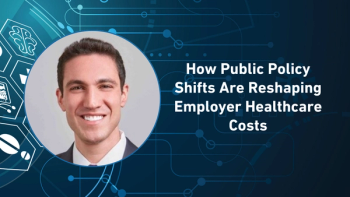
- Pharmaceutical Commerce - January/February 2010
Get ready for Pharma 3.0, says Ernst & Young in its annual Progressions report
The growth of healthcare business is attracting many new players to the pharmaceutical arena, challenging pharma’s relationships with patients
Many industry managers have had their foot on the gas pedal to accelerate their company’s adjustment to Pharma 2.0—the replacement of the monolithic blockbuster-drug era with one of targeted therapies and outsourced partnering. Now, says Ernst & Young (New York) in its latest annual Progressions report, get ready for Pharma 3.0, which is a new “ecosystem” that will include telecommunications companies, leading online businesses like Google or Microsoft, retailers (think Walmart or retail medical clinics), and social media ranging from “e-health” businesses to Facebook.
“Despite the tumultuous changes over the last few years, executives realize the road ahead will become even more complex with the entry of new players which are being lured to the sector in increasing numbers,” says Carolyn Buck Luce, E&Y global pharmaceutical leader. “In this environment, successful companies will find new ways to combine their unique assets and attributes with those of partners through dynamic collaborations focused squarely on patient outcomes and the consumer experience.”
A survey conducted among leading pharma firms in conjunction with the report found that 67% of respondents said they are not well prepared for valuation and modeling potential deals with nontraditional partners.
One of the hallmarks of how Pharma 3.0 will operate is the question of who owns, or has access to, the most important data about health outcomes and conditions. Traditionally, the pharma industry has owned much outcomes data via its control of clinical trials and patient studies. But new players, collecting and mining patient data, could turn pharma into a mere commodity provider. A case in point is the concept of a “commercial trial,” which could include outcomes from a clinical study as well as results from new business models. Yet other dramatic changes could occur as the pharma industry pairs up with new partners in addressing emerging markets. Back of all of this is newly empowered consumers, who could be in a position to dictate more and more of how their healthcare is managed.
The Progressions report will be available at ey.com.
Articles in this issue
almost 16 years ago
Medication adherence could get an EHR boostalmost 16 years ago
Improving Outcomes Research Protocolsalmost 16 years ago
Brand Protection Technology Takes a Patient-Communication Turnalmost 16 years ago
OPINION: Will Class-Wide REMS Programs Delay New Opioid Approvals?almost 16 years ago
Bill Gates: 'Vaccines Are A Miracle'almost 16 years ago
Coming Togetheralmost 16 years ago
Agenda Set for Spring HPCLC Meetingalmost 16 years ago
Model N extends revenue management process with contract-authoring toolsNewsletter
Stay ahead in the life sciences industry with Pharmaceutical Commerce, the latest news, trends, and strategies in drug distribution, commercialization, and market access.




